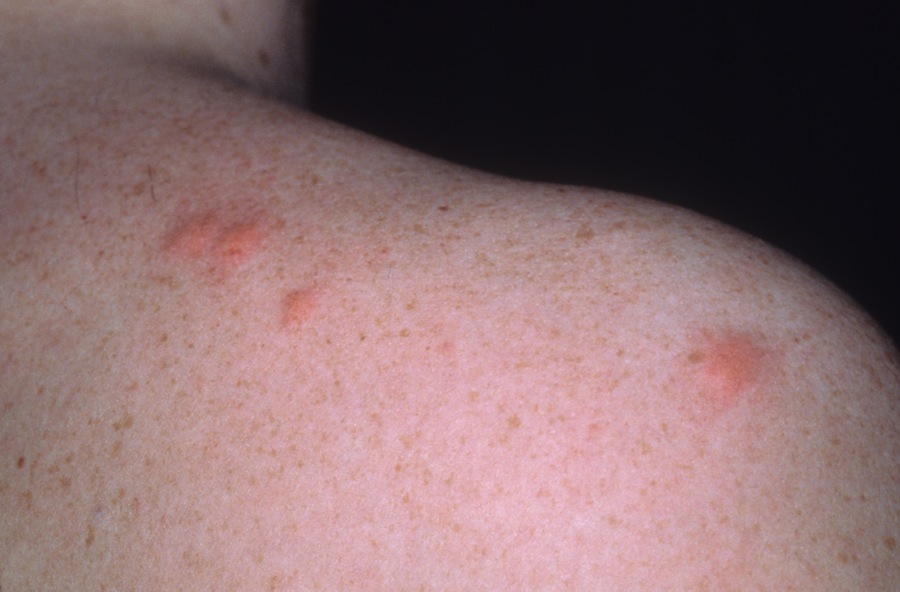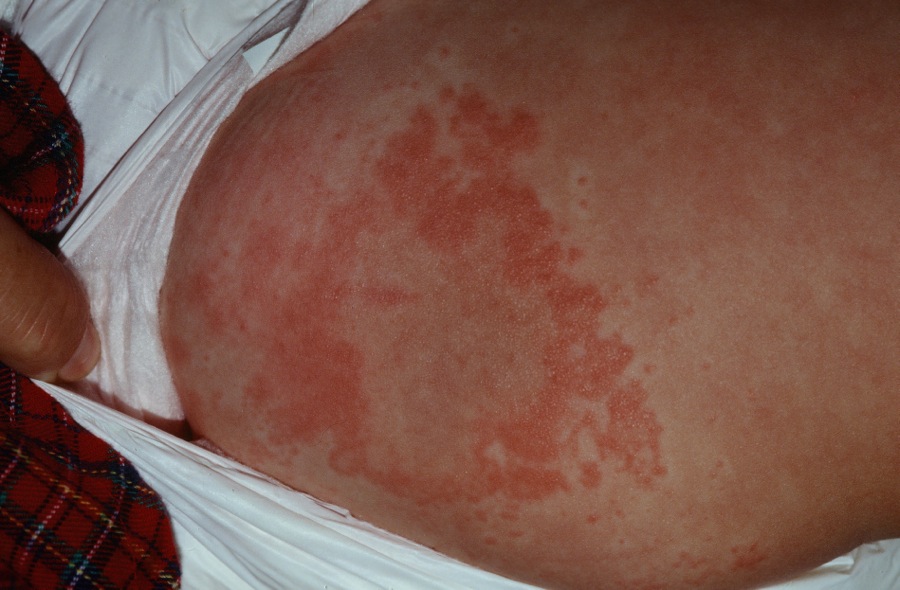
Linear lesions may occur in groups of three (or four) and have been called "breakfast, lunch, and dinner (and a snack)."

Linear lesions may occur in groups of three (or four) and have been called "breakfast, lunch, and dinner (and a snack)."

A large urticarial ring is one dramatic presentation of an insect bite. One should always consider infection when there is a solitary red area of the skin. Any fever, pain, pus, spreading redness or worsening symptoms should prompt the patient to seek immediate attention.
The term papular urticaria refers to the urticarial bumps that occur with insect bites. Blisters are common as well. Humans are often bitten by various insects, e.g., mosquitos, spiders, etc., which induces an immune response at the bite site.
The most common response is an intensely itchy urticarial papule or nodule. Lesions may have a scab or disruption in the center from the bite. Targetoid or bullous lesions may be seen. The lesion usually occurs in an exposed area. Linear lesions may occur in groups of three (or four) and have been called "breakfast, lunch, and dinner (and a snack)." Bullous lesions are usually tense, filled with clear fluid, and with an uninflamed base. Asymmetry is almost always part of the pattern, helping with the diagnosis. Itchy argues for a bite where as pain might signify an infection.
If lesions continue to develop, then ongoing exposure in the house must be considered. Has anyone in the family stayed in a hotel recently or has anyone slept over recently (bed bugs)? Any nests in the eves (bird mites)? Are there any animals in the house? See flea bites.
Who is Dr. White? | Privacy Policy | FAQs | Use of Images | Contact Dr. White